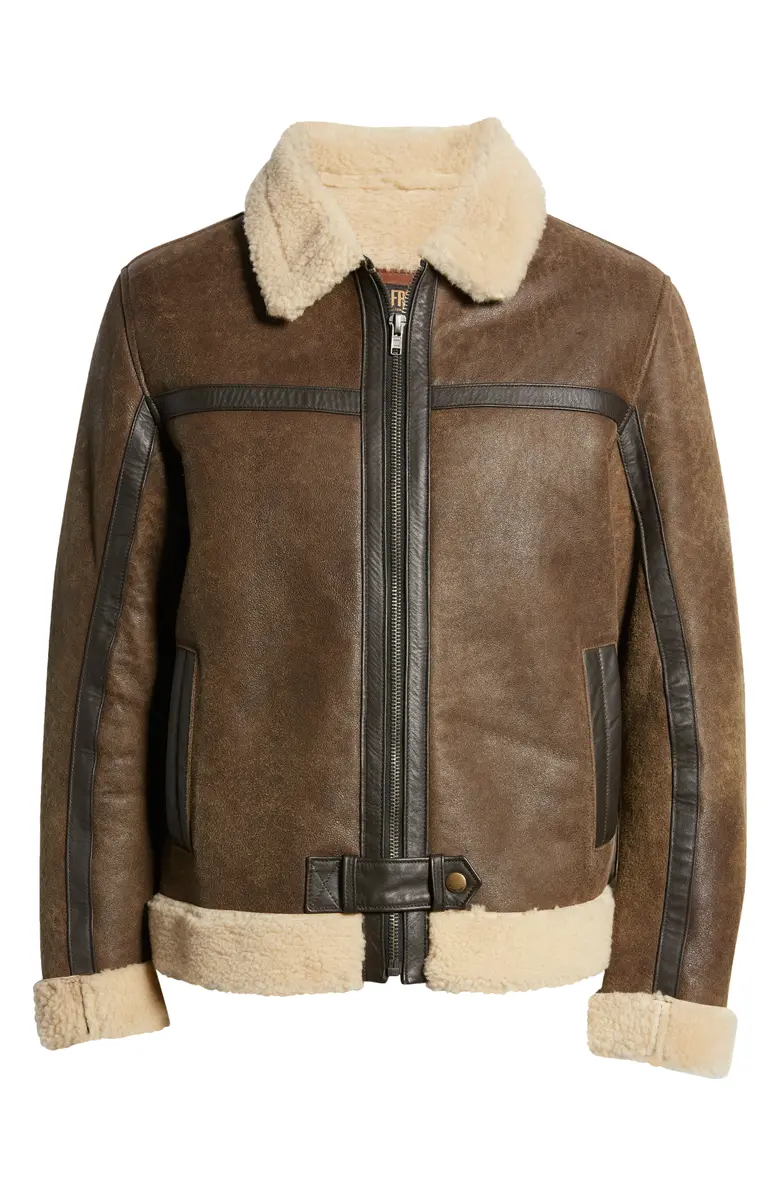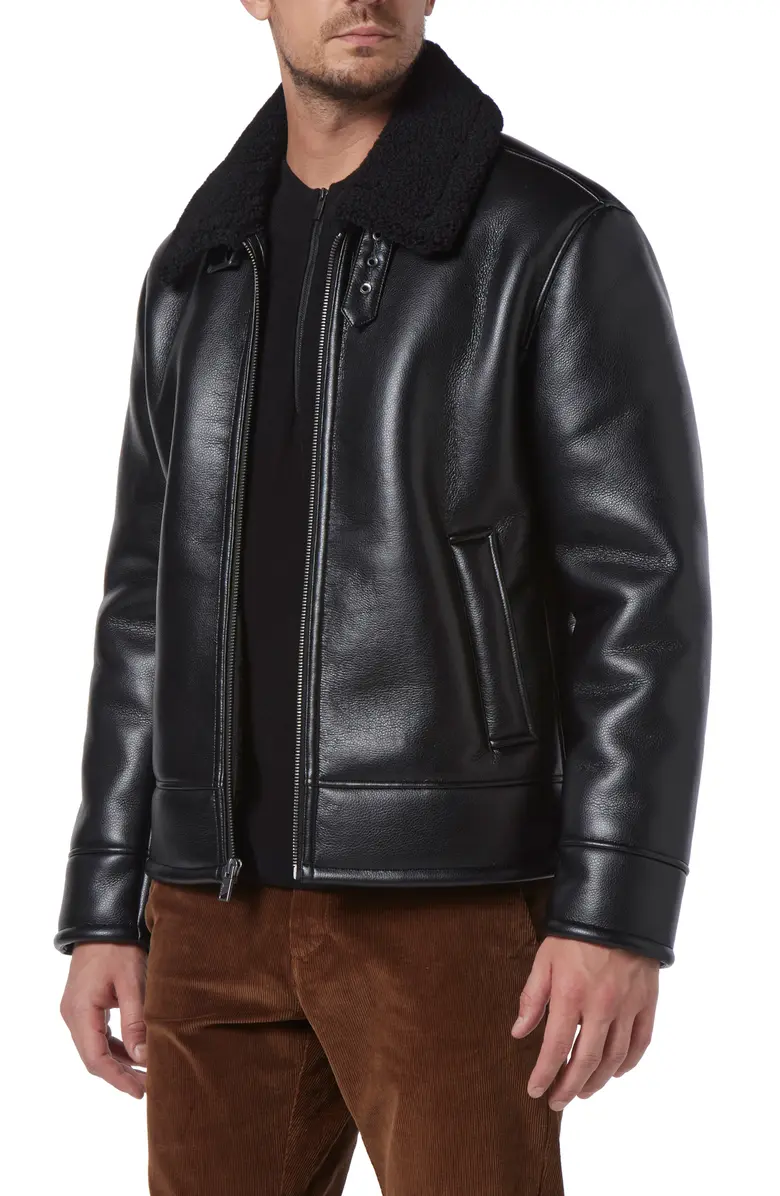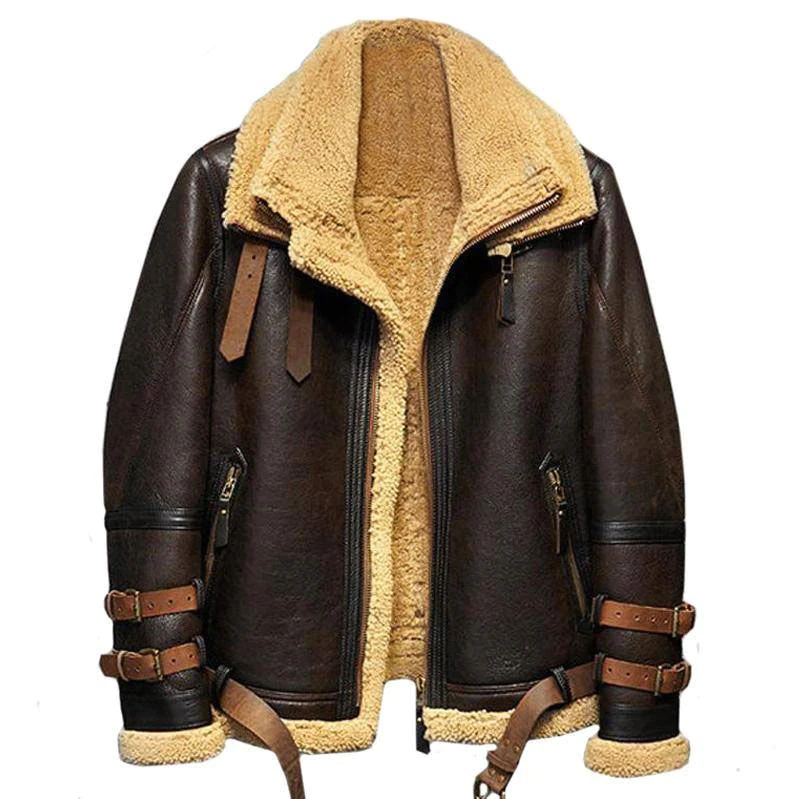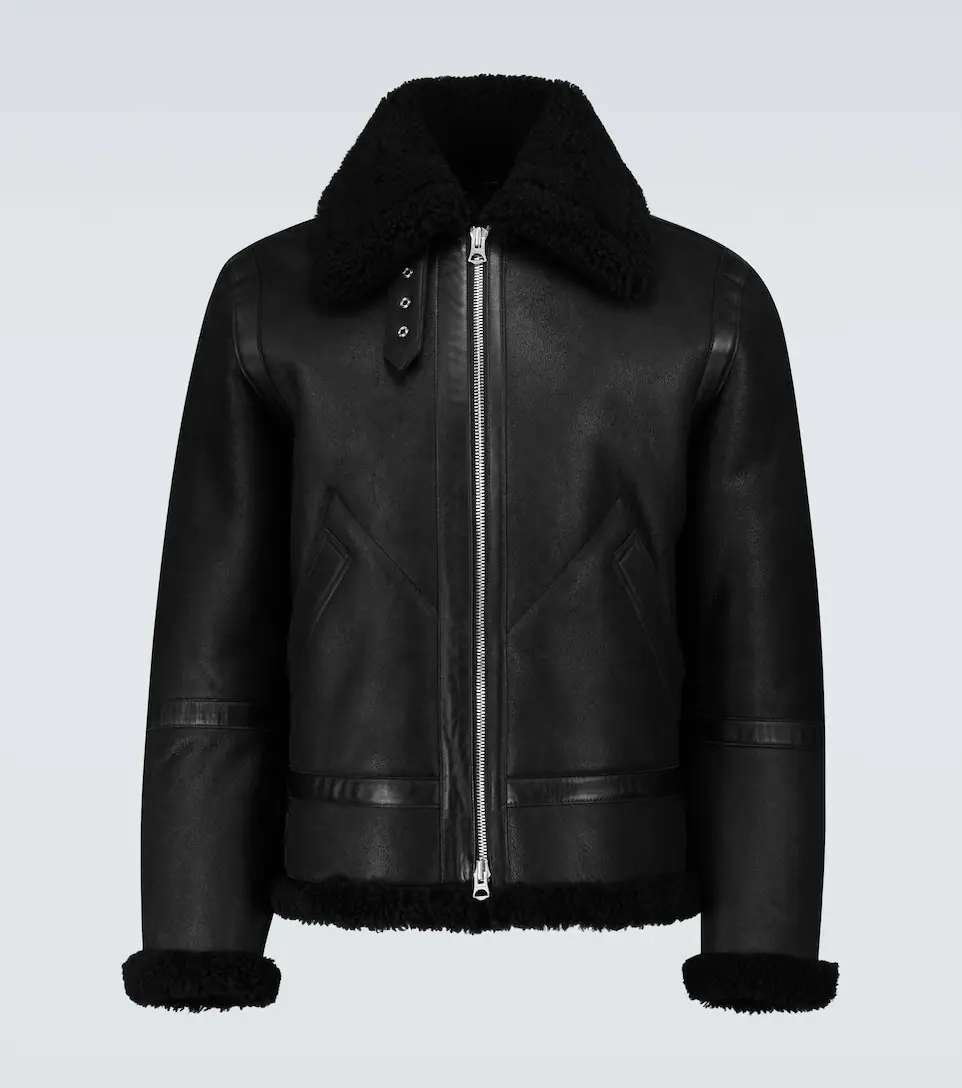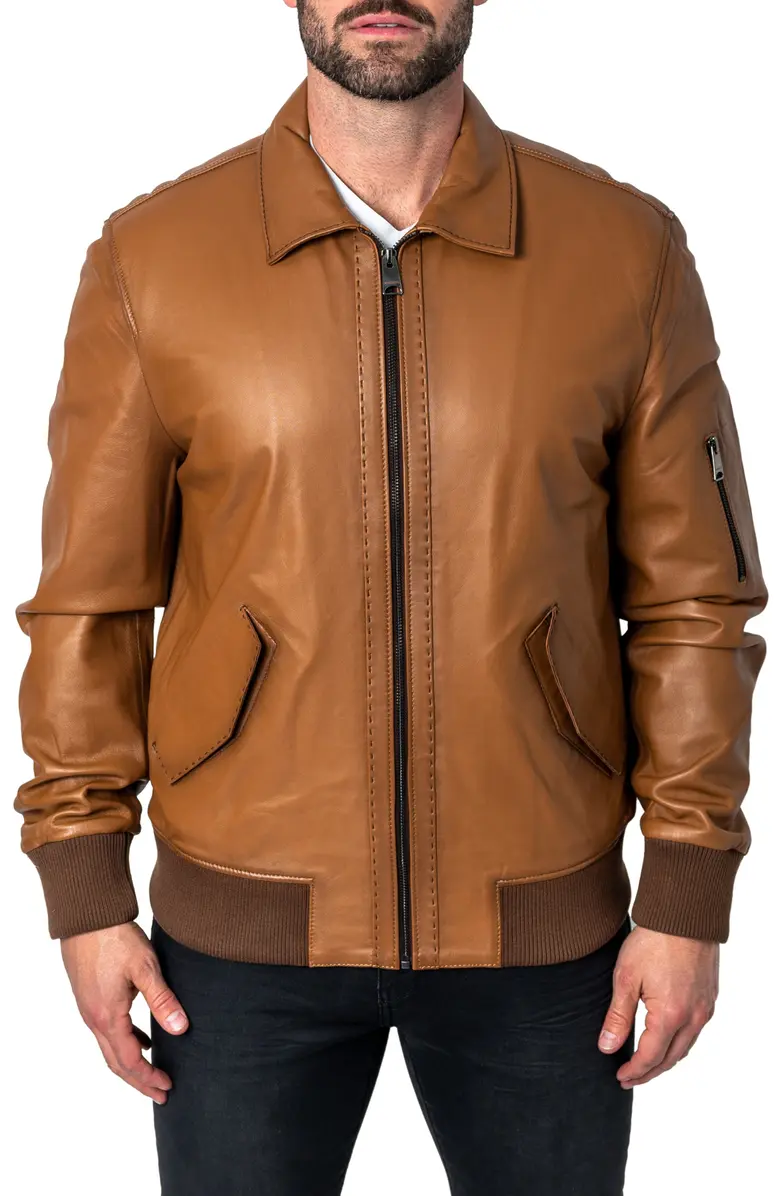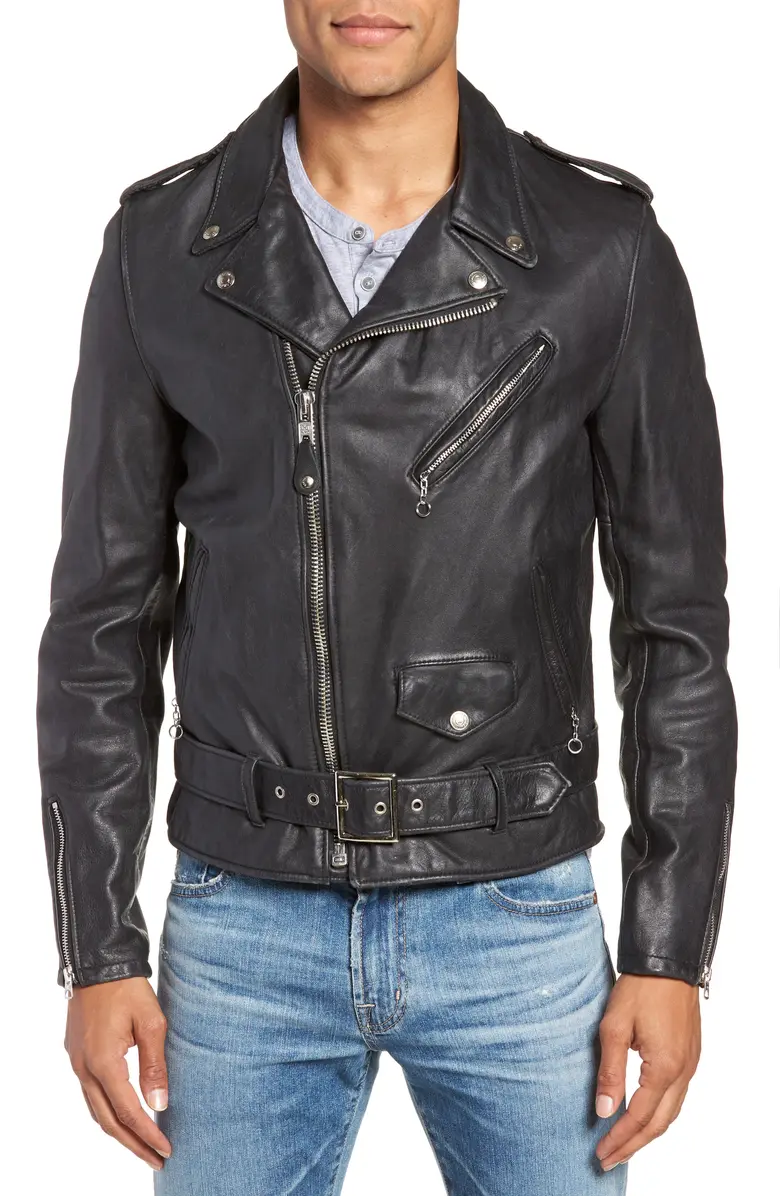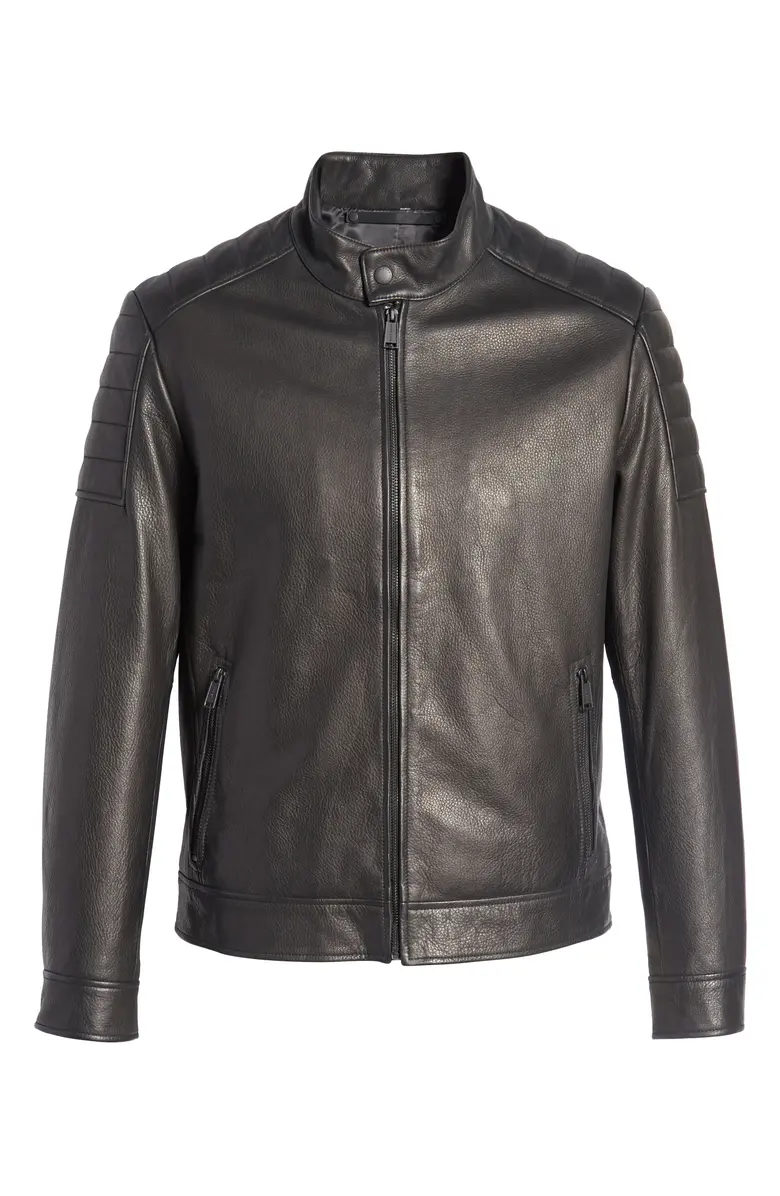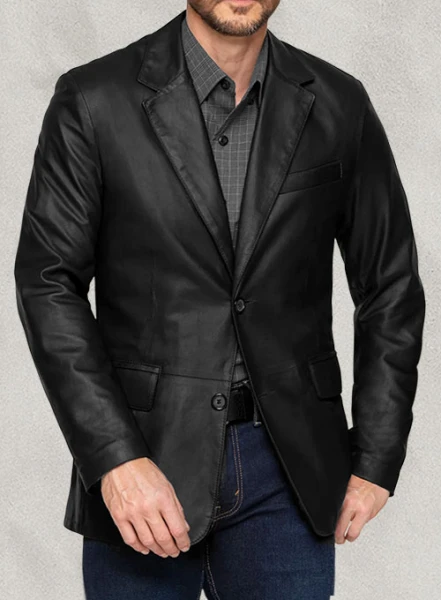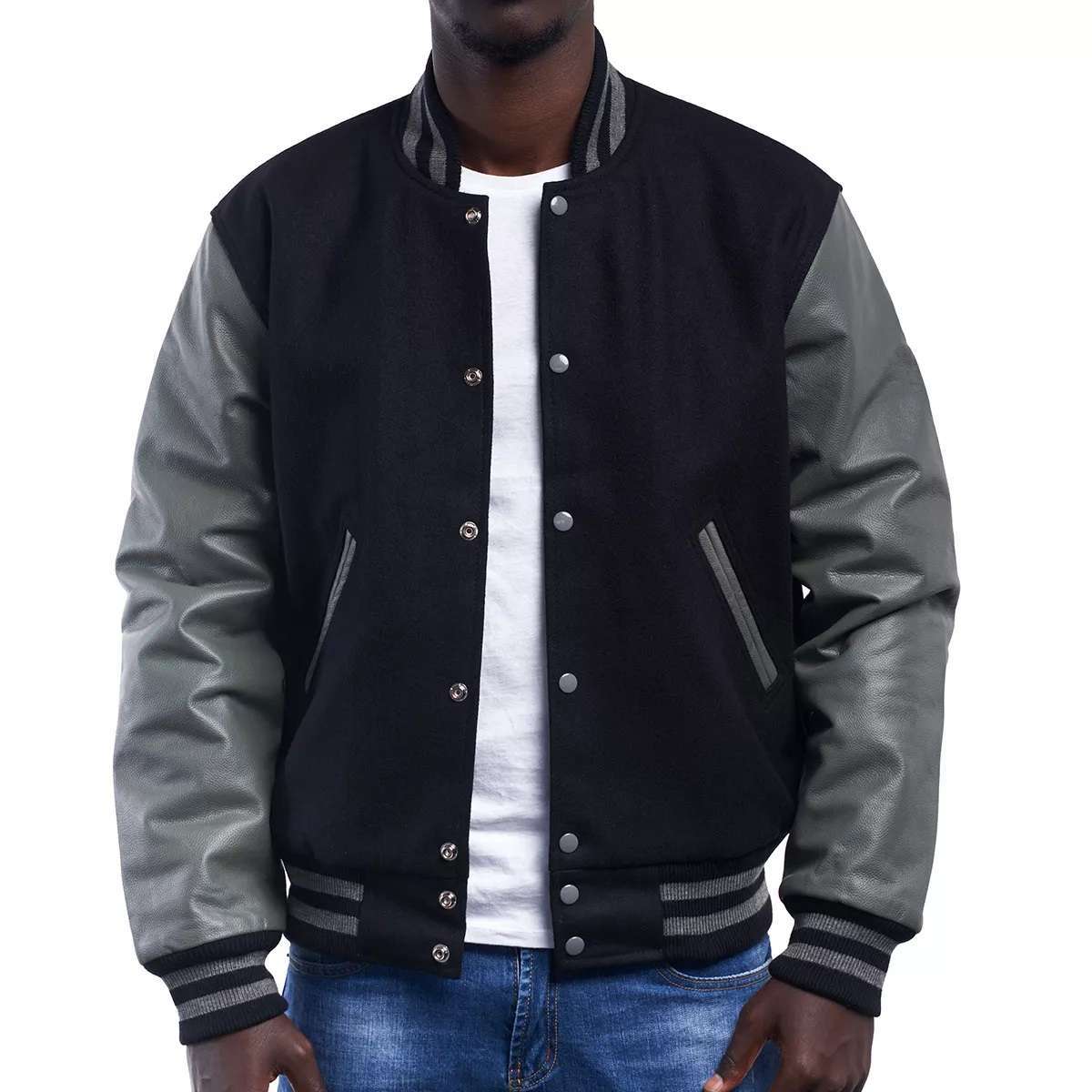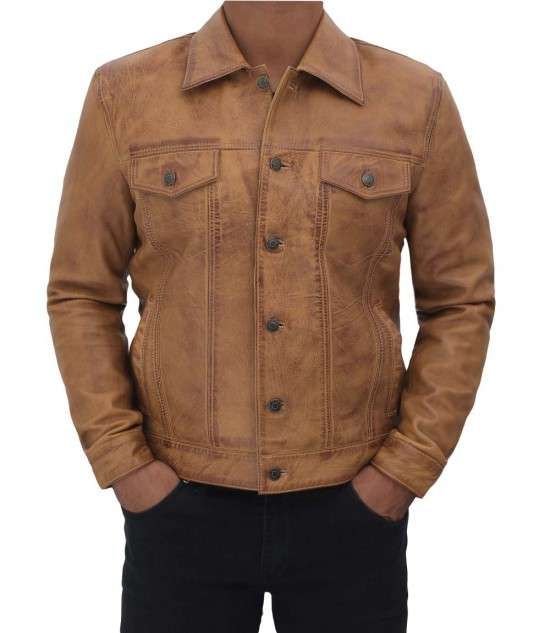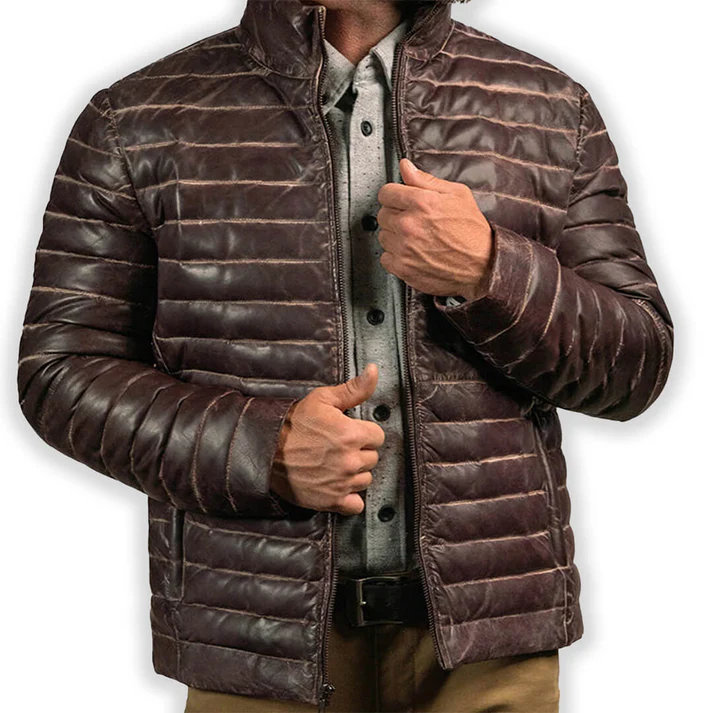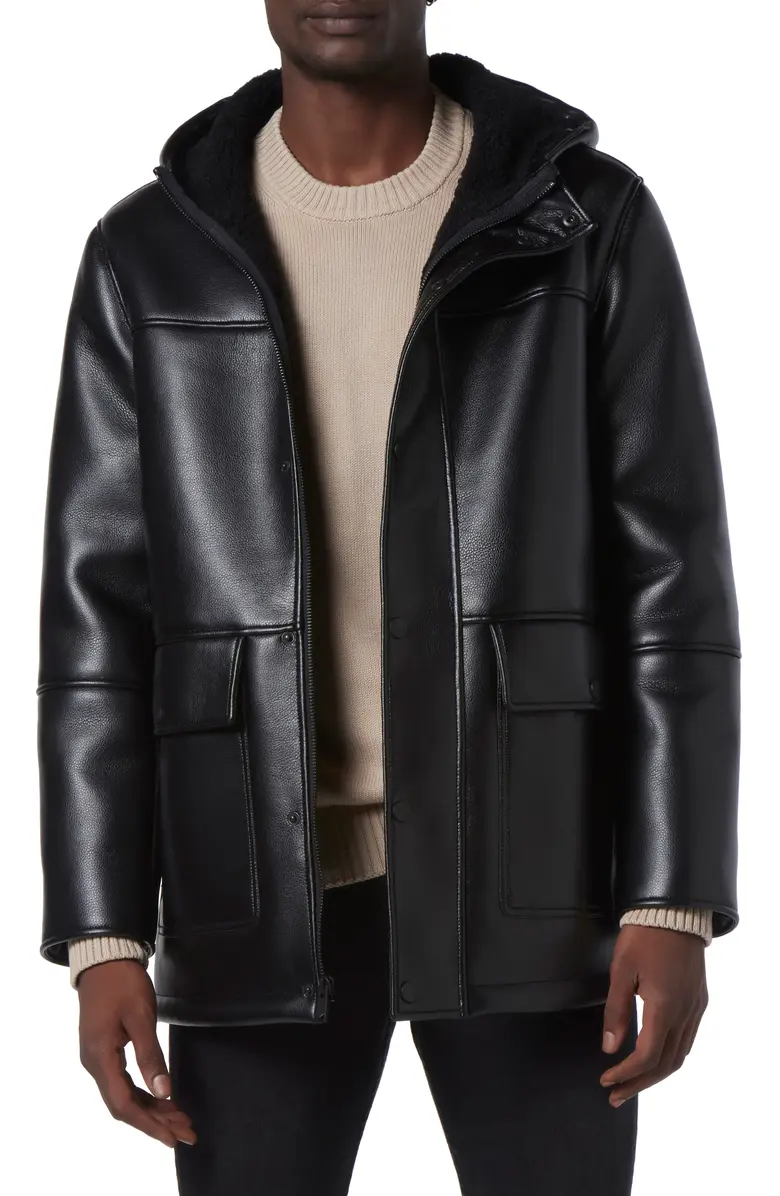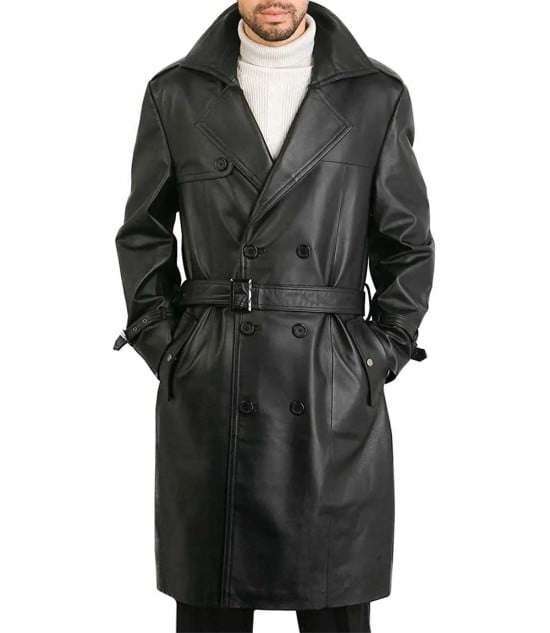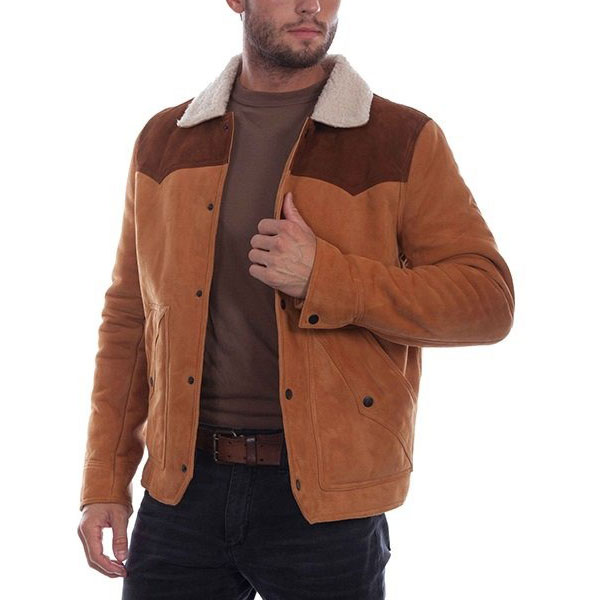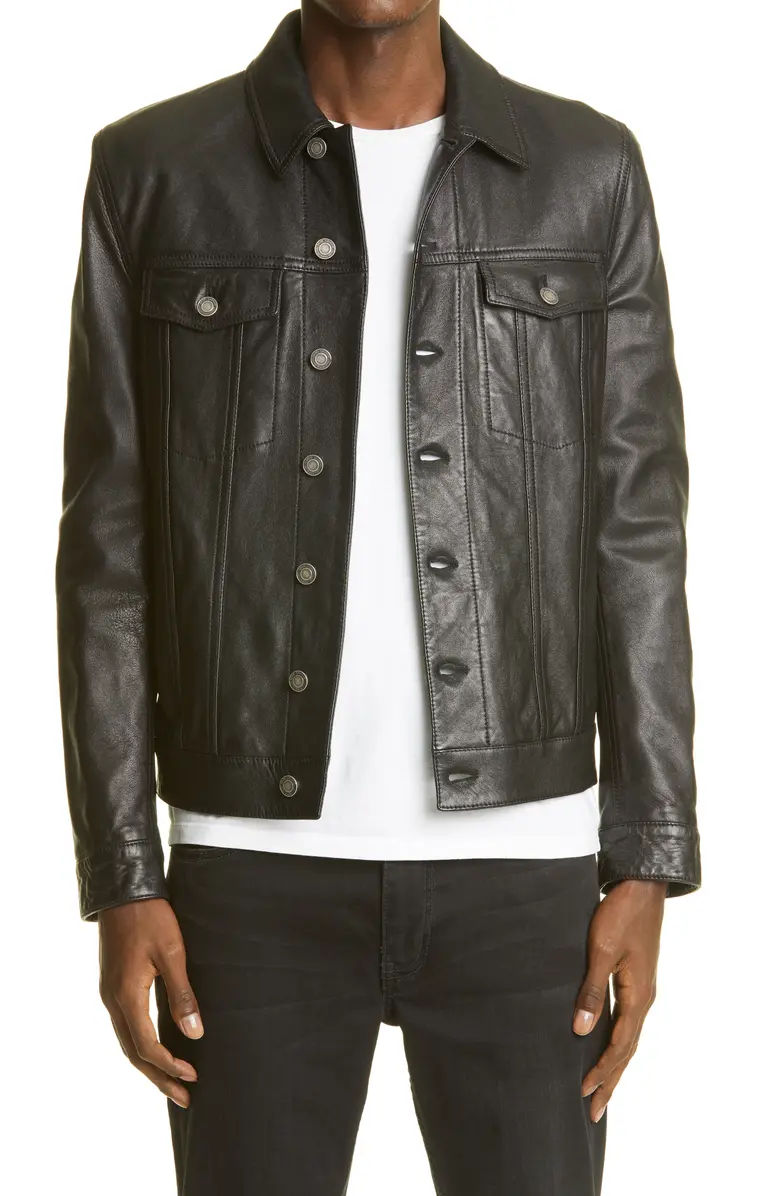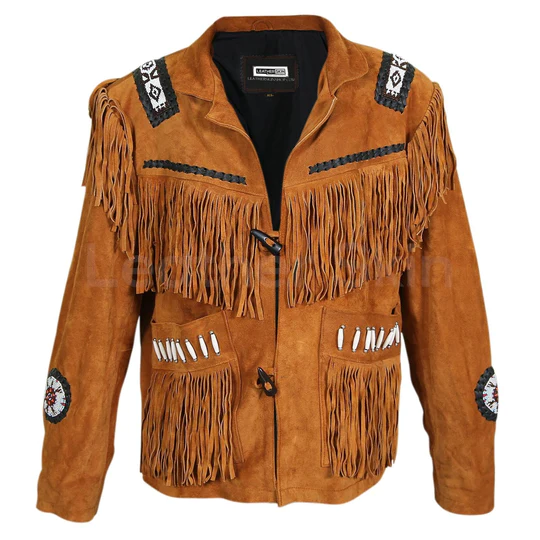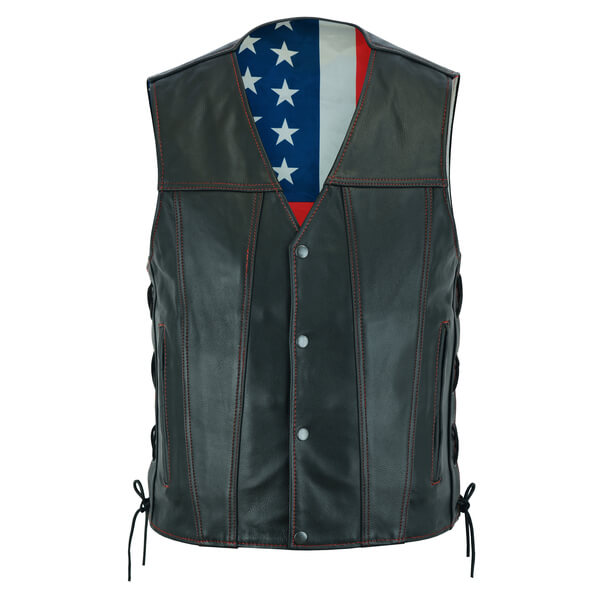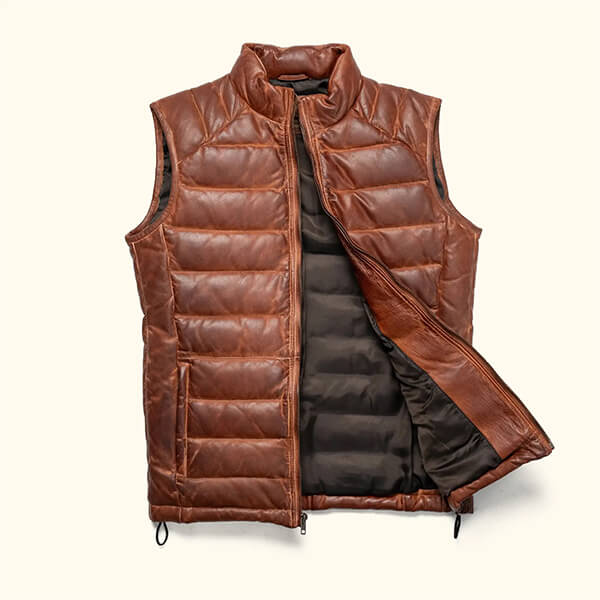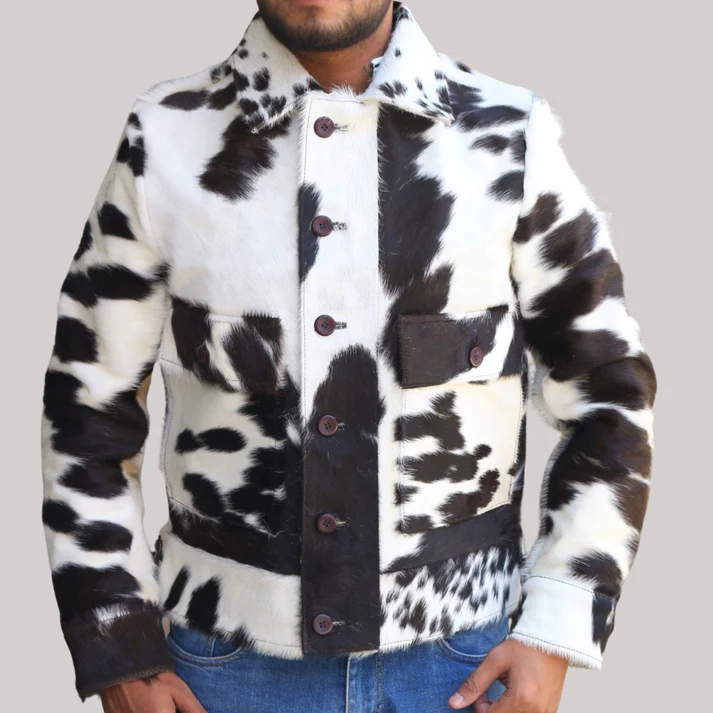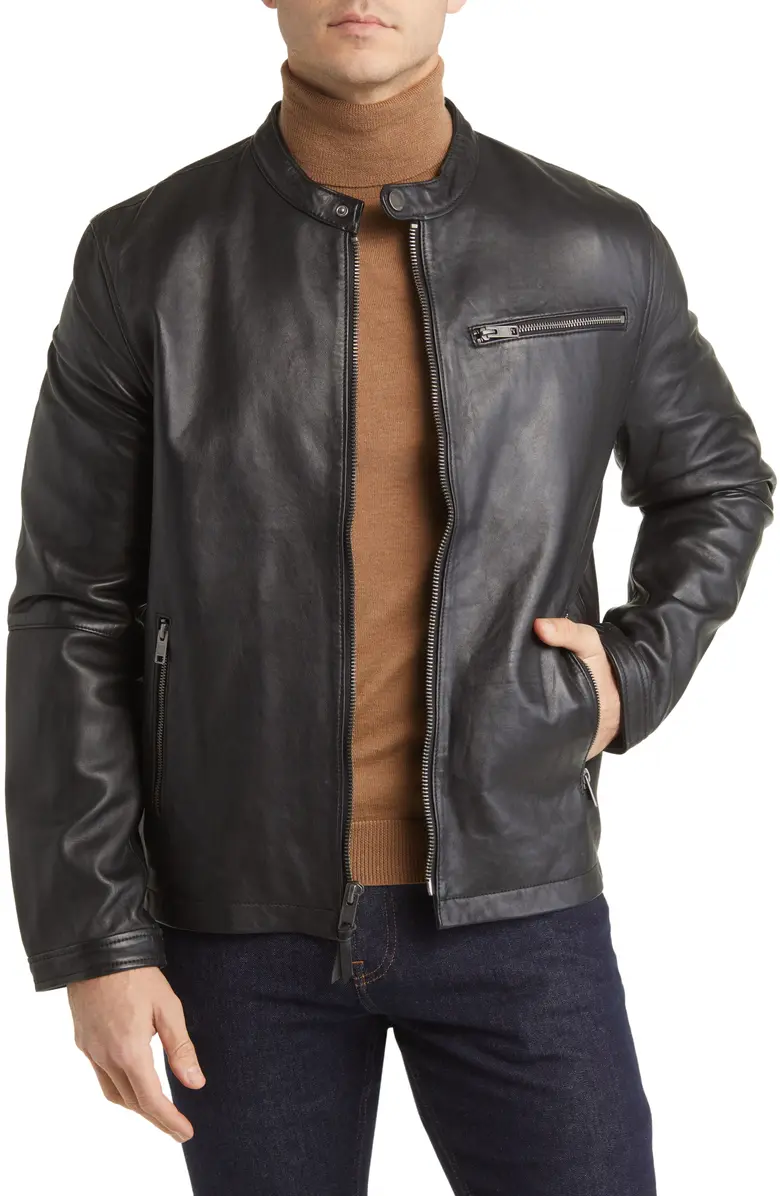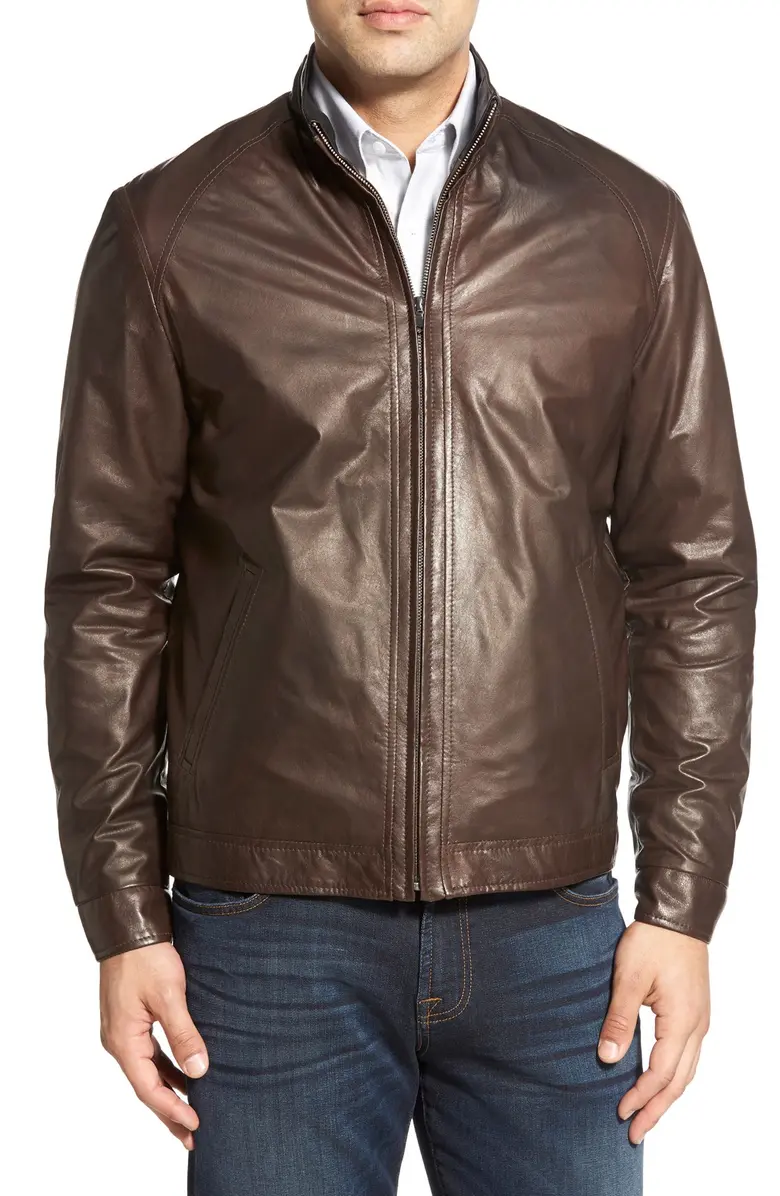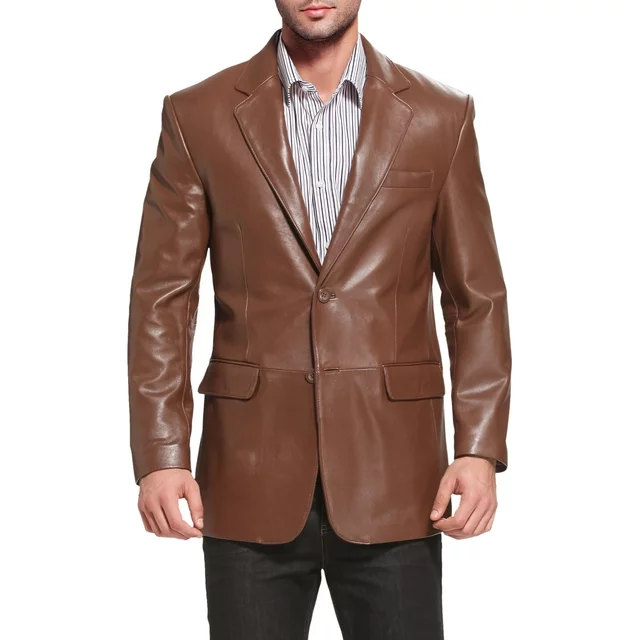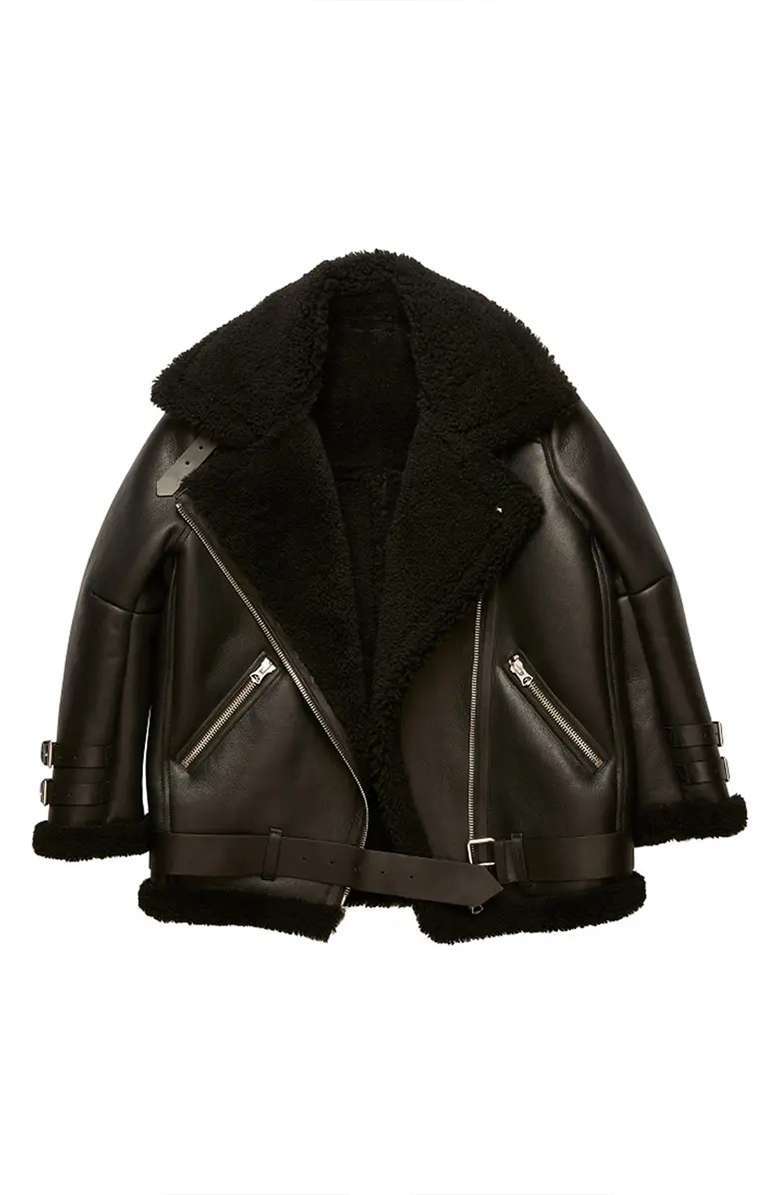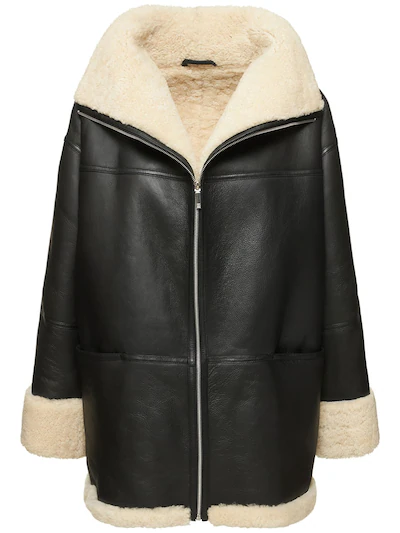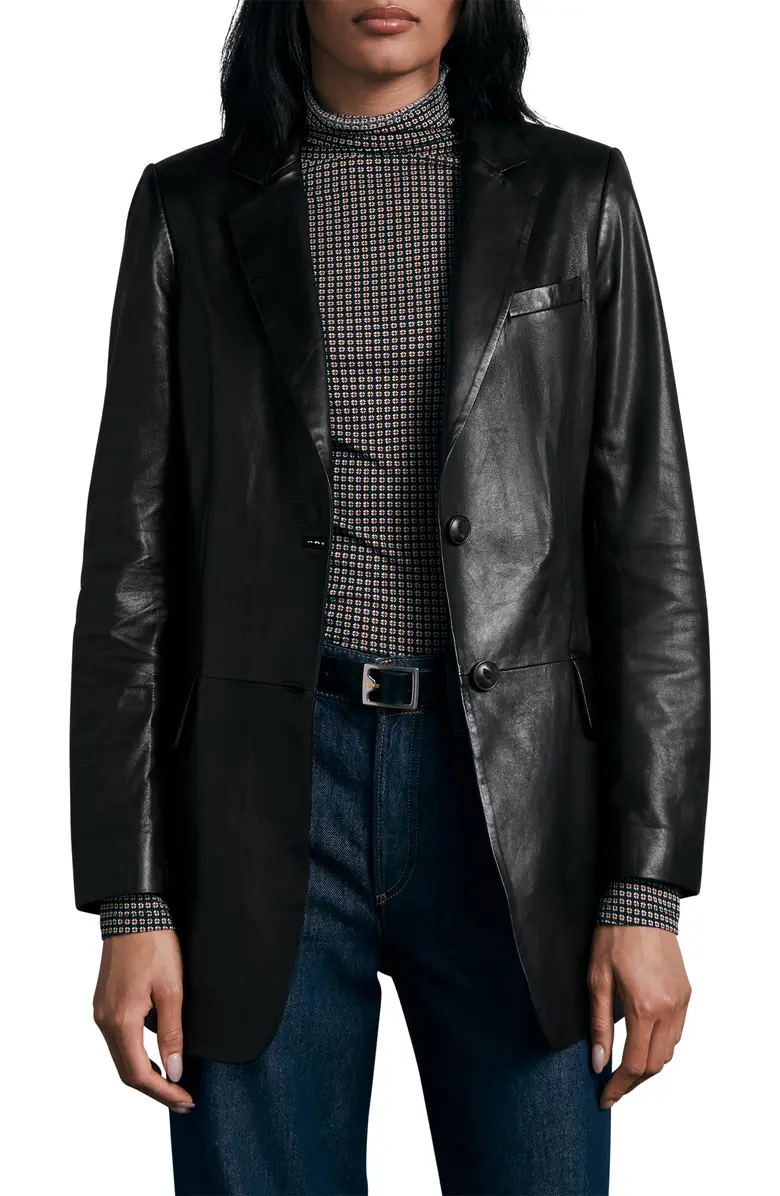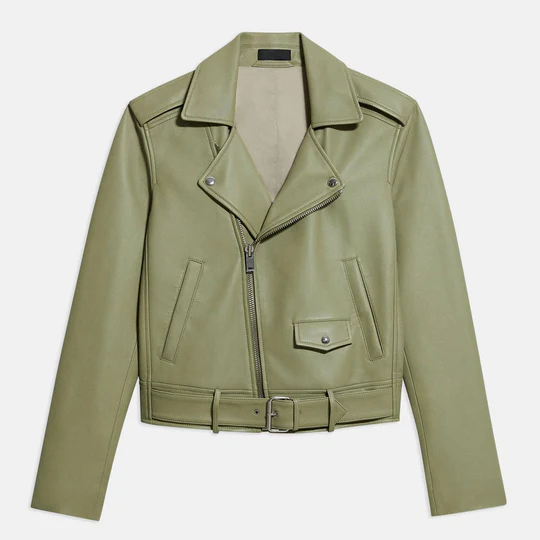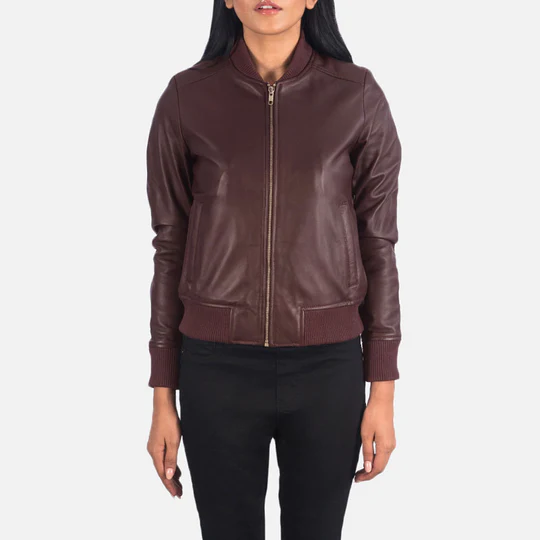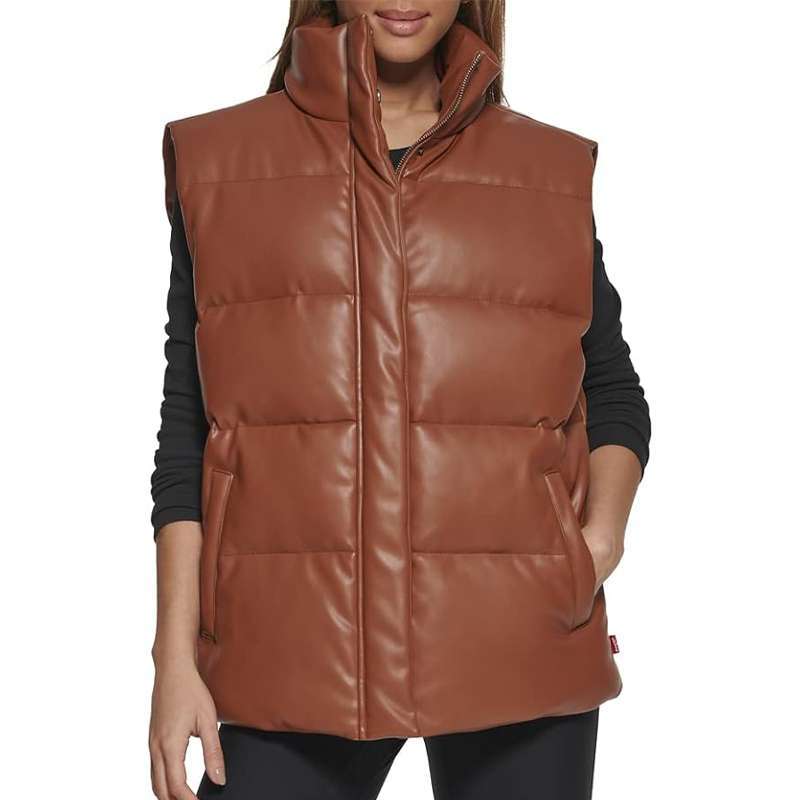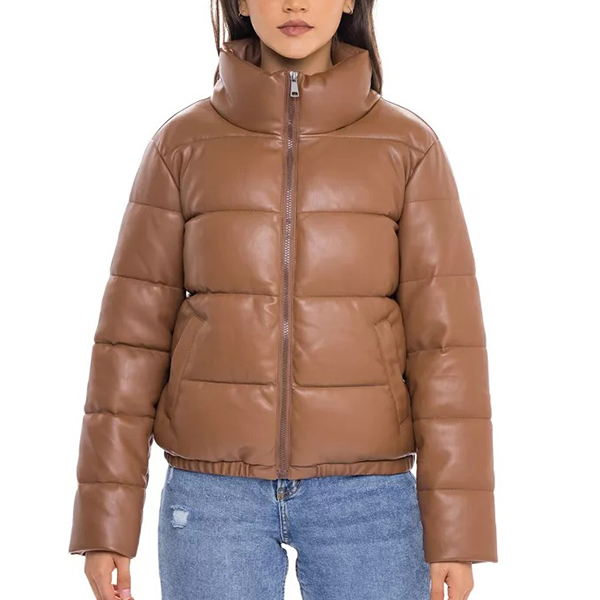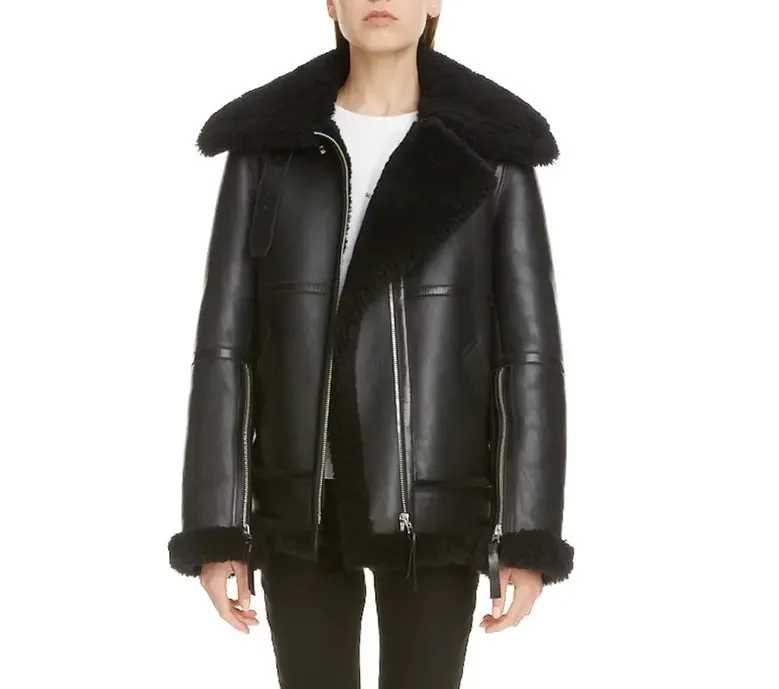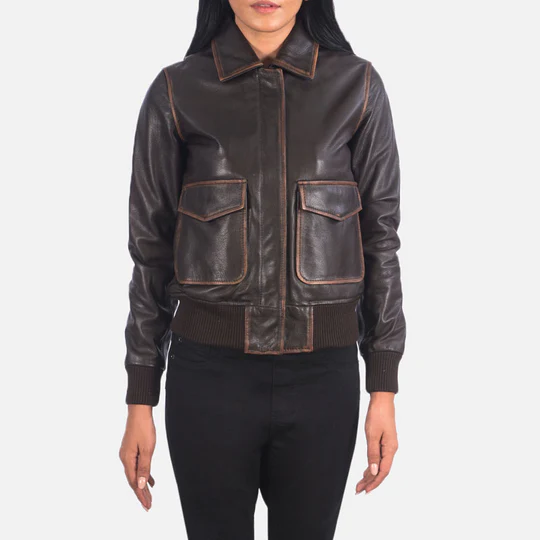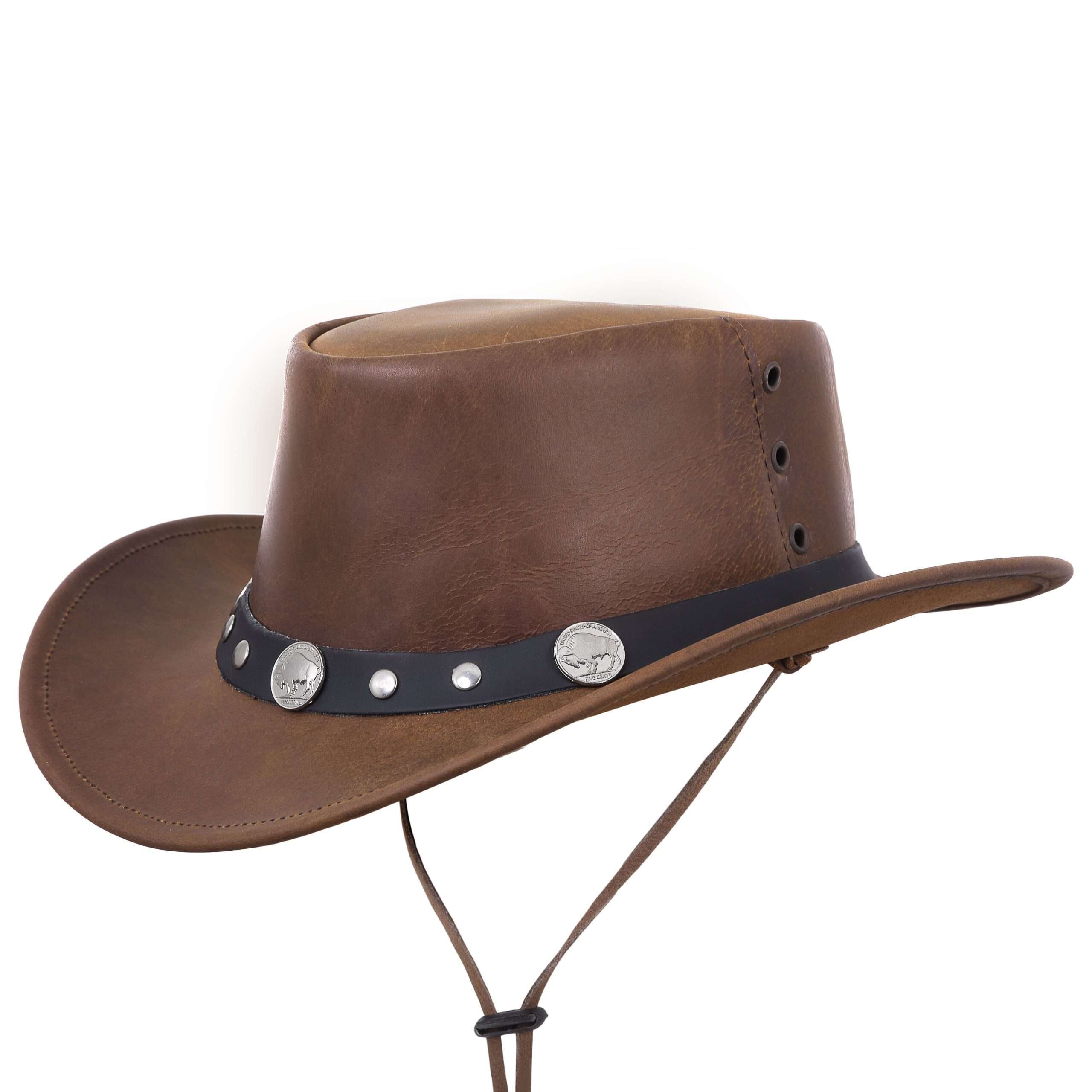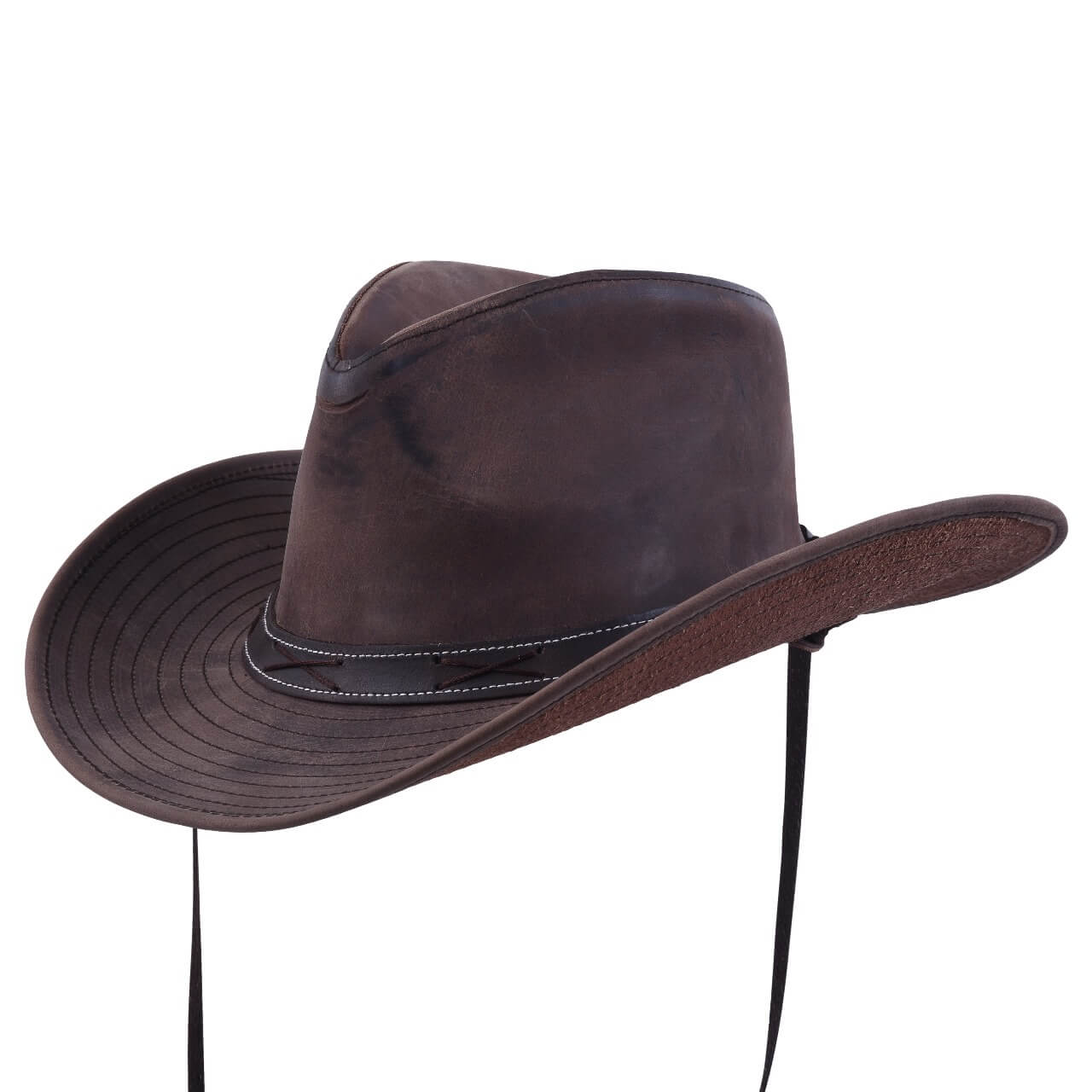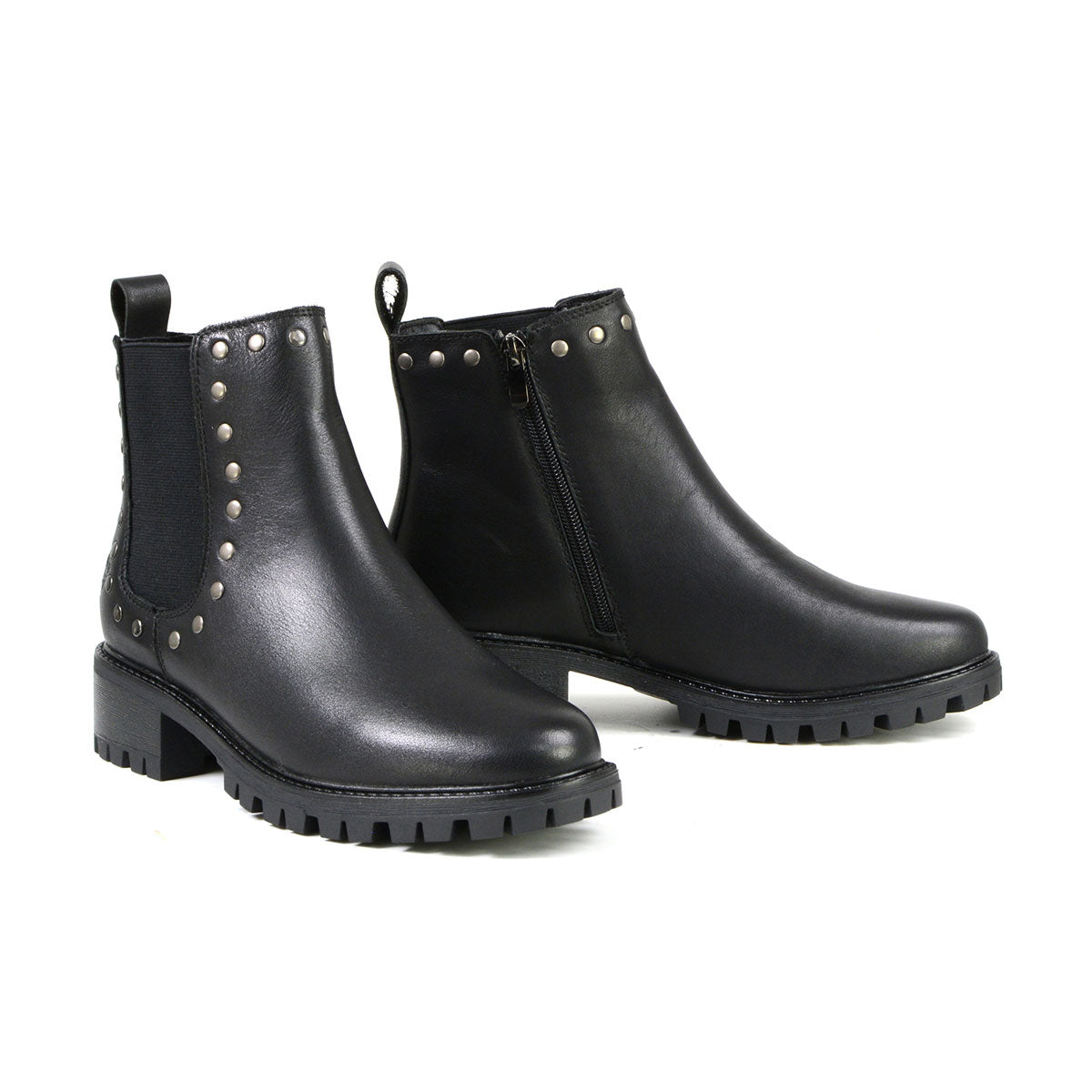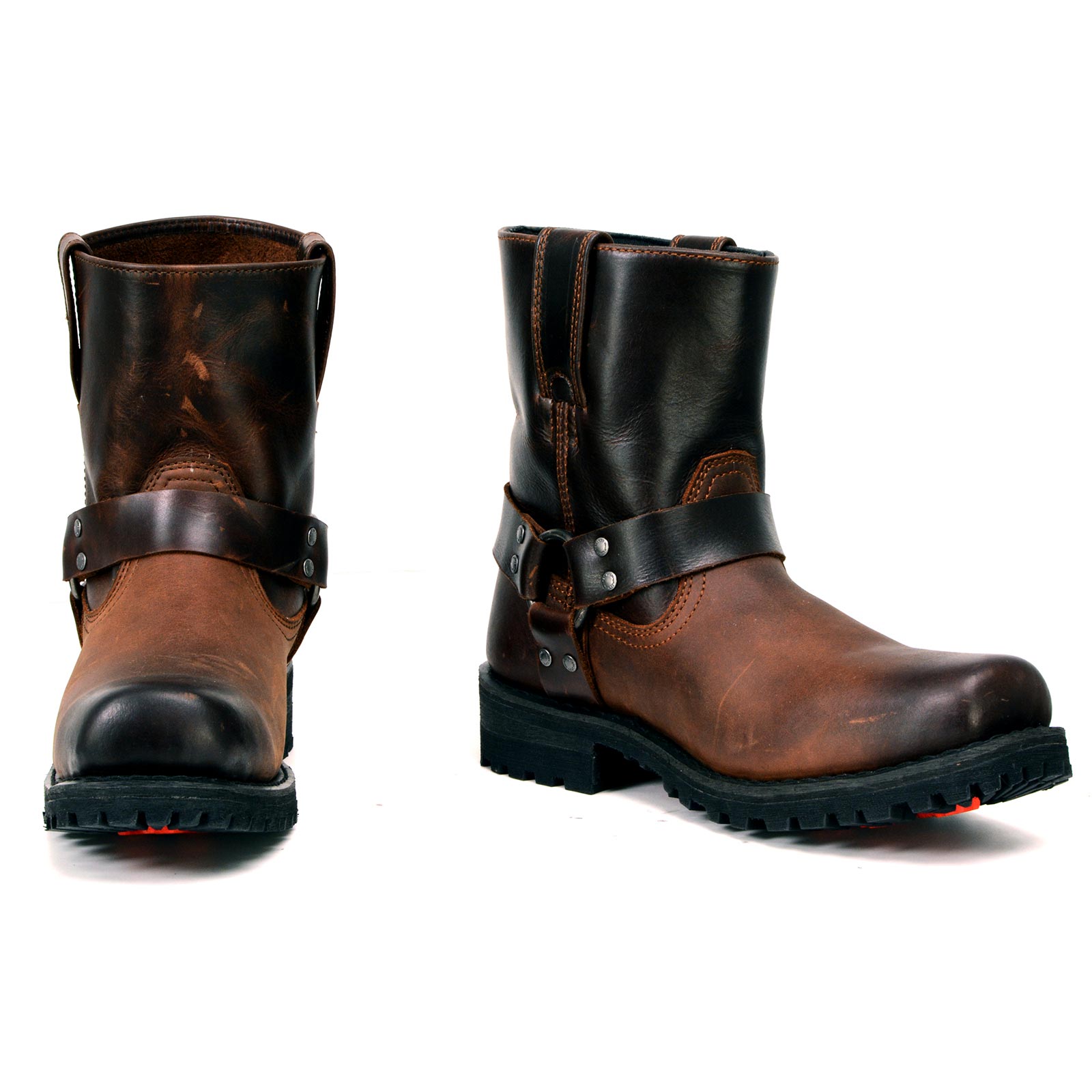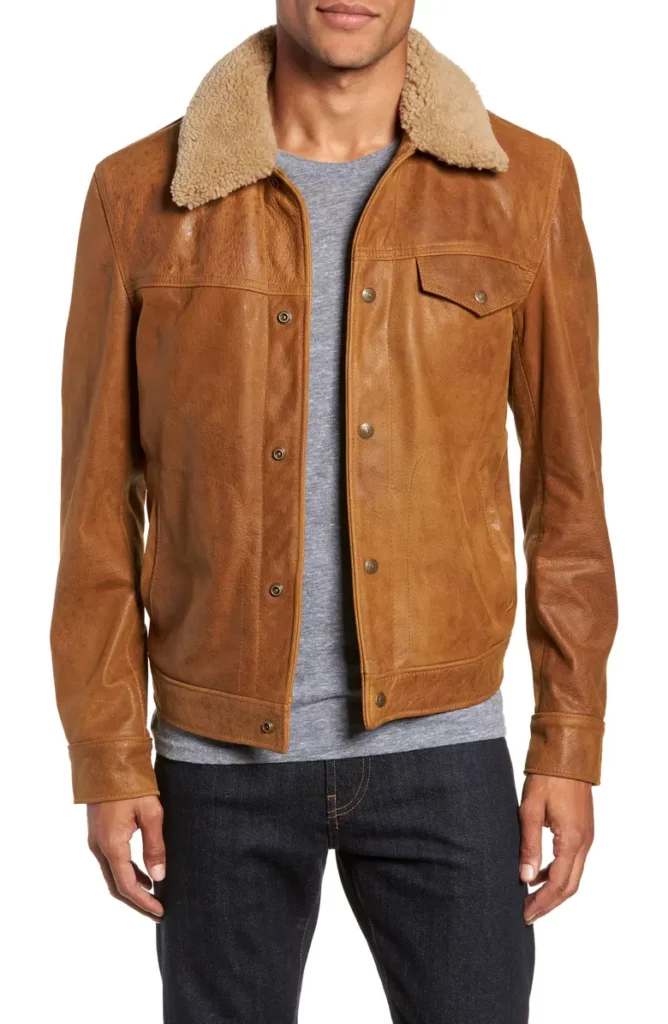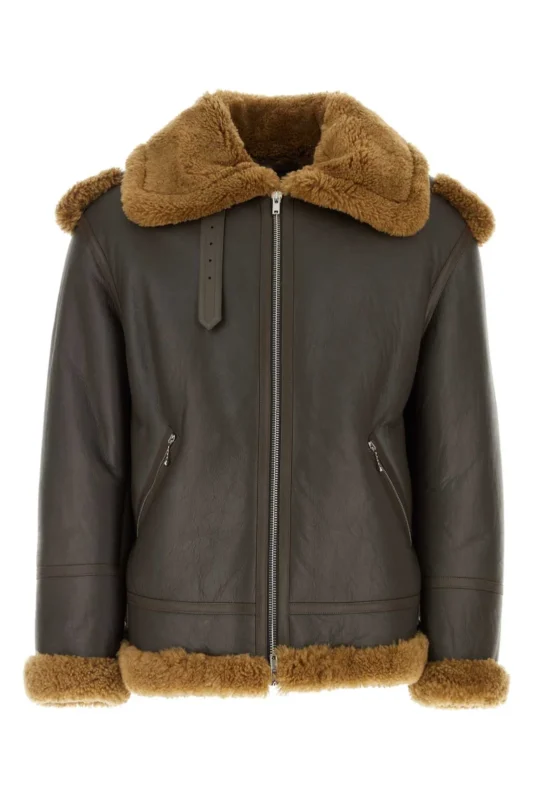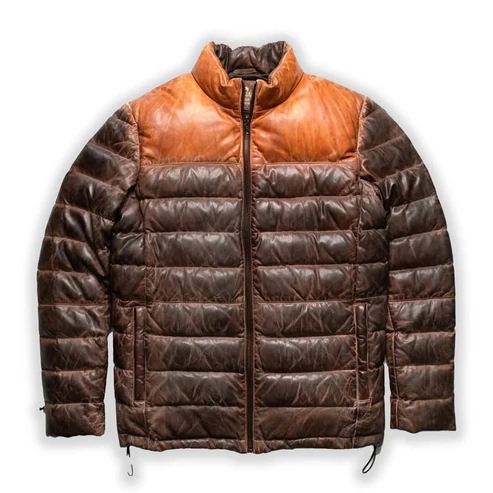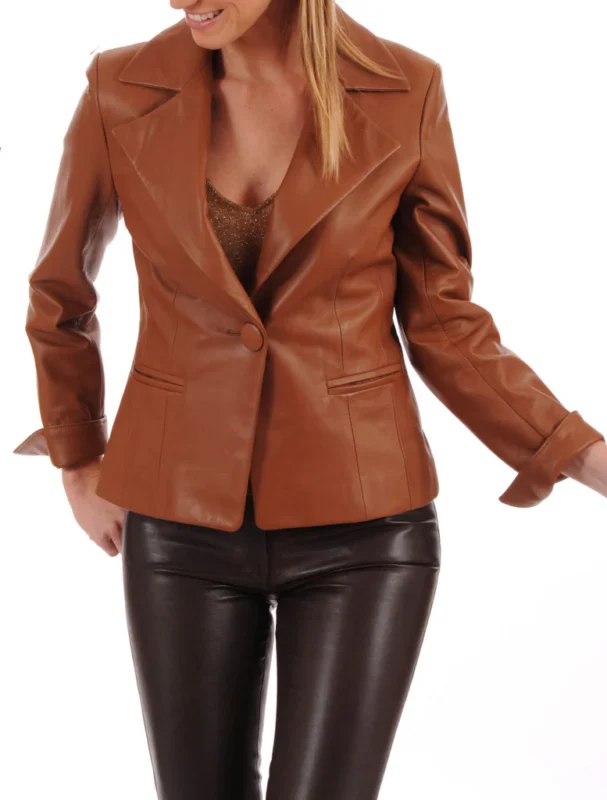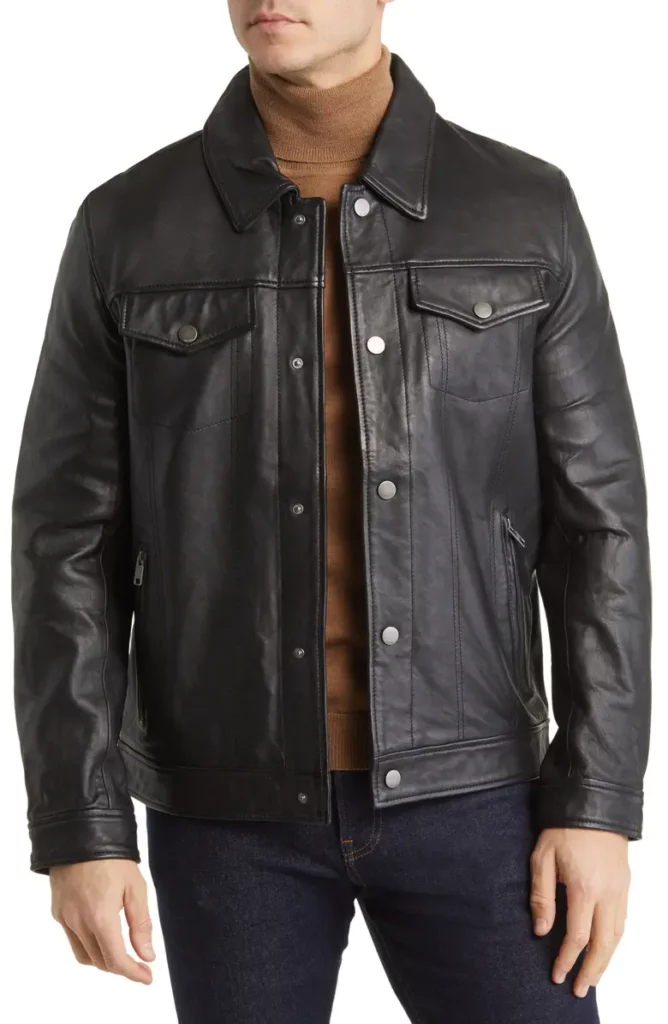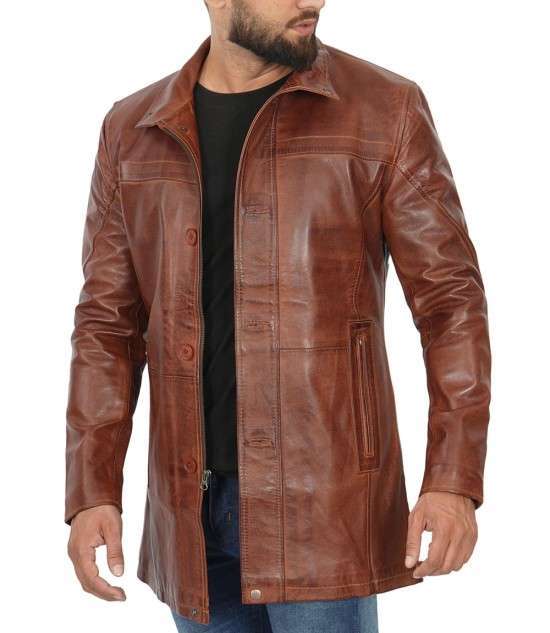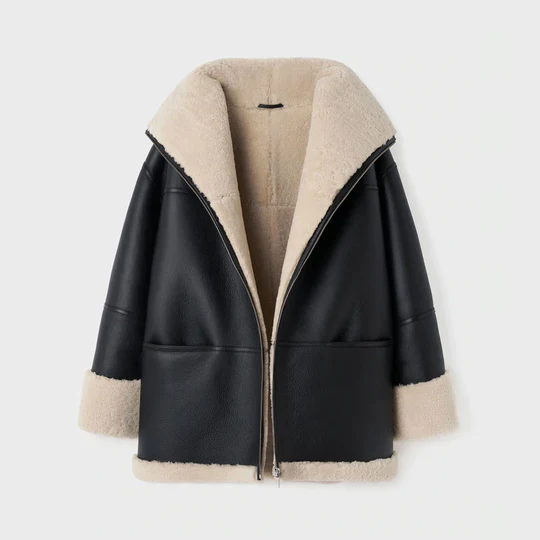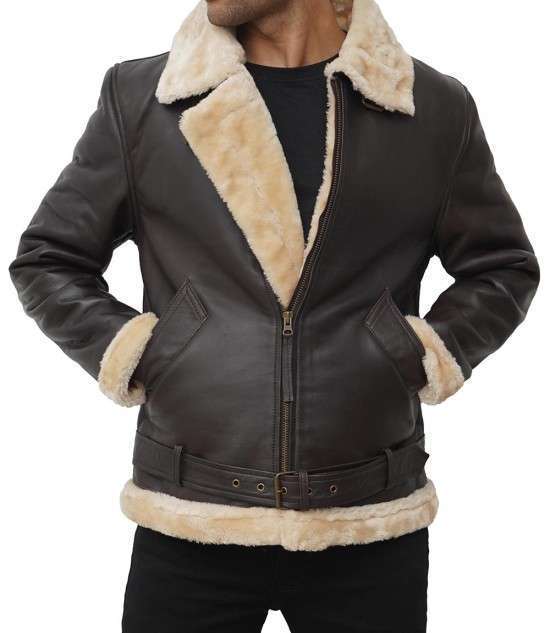Few garments have the universal allure of a leather coat. Its combination of sleek design, resilience, and ability to adapt to trends ensures it remains a wardrobe essential. Leather coats aren’t just about aesthetics—they offer a level of durability and utility unmatched by other materials. Whether you’re battling the chill of winter or making a fashion statement, a leather coat is versatile and timeless.
Relevance Across Generations
Leather coats transcend age, gender, and style preferences. From the classic bomber jacket to modern trench styles, leather outerwear caters to diverse tastes. Their ability to blend tradition with modernity keeps them perpetually in vogue.
Buffalo Leather Trucker Jacket w/ Sherpa Lined Collar
Understanding Warmth in Outerwear
What Does “Warm” Really Mean?
Warmth in outerwear refers to a garment’s ability to retain body heat and shield against external cold. Leather coats excel in insulation due to the material’s density and natural properties. Leather acts as a barrier against wind and cold, ensuring the body maintains a comfortable temperature.
The Science Behind Insulation
Leather’s structure includes tightly packed fibers that trap air, creating an insulating layer. When paired with linings like wool or shearling, leather coats provide even greater thermal protection.
Factors That Influence Warmth
Several factors determine the warmth of a leather coat:
- Material Thickness: Thicker leather provides superior insulation.
- Type of Lining: Shearling, fleece, or quilted linings enhance the coat’s ability to retain heat.
- Fit and Coverage: A snug fit minimizes heat loss, while longer designs offer more protection.
- Climate Adaptability: Leather coats are ideal for moderate to cold climates, offering flexibility for layering in extreme weather conditions.
Men’s B-3 Brown Leather Shearling Aviator Jacket
Leather as a Material
Unique Properties and Warmth Potential
Leather is a material renowned for its natural durability, versatility, and timeless appeal. Derived from animal hides, it undergoes specialized tanning processes to achieve a robust yet flexible texture. Key characteristics of leather include:
- Natural Insulation: Leather effectively retains body heat due to its dense fiber structure, making it a suitable choice for colder climates.
- Breathability: Unlike many synthetic materials, leather allows air circulation, ensuring comfort without overheating.
- Durability: With proper care, leather can withstand wear and tear, lasting for decades.
- Wind and Water Resistance: Its natural density acts as a barrier against wind and light rain, providing practical protection in various conditions.
Different Types of Leather
Not all leather is created equal, and the type of leather used in a coat significantly influences its warmth and functionality. Here’s a closer look at common types:
Cowhide
- Durability: Cowhide is thick and robust, making it ideal for long-lasting coats.
- Warmth Potential: Its dense structure offers excellent insulation, suitable for colder climates.
- Style: Often used in biker jackets, cowhide provides a rugged, classic appearance.
Lambskin
- Softness: Lambskin is lighter and softer than cowhide, offering a luxurious feel.
- Warmth Potential: While thinner, it provides good insulation when paired with a proper lining.
- Style: Known for its sleek and refined look, lambskin is popular in fashion-forward designs.
Suede
- Texture: Suede is made from the underside of the hide, resulting in a soft, velvety finish.
- Warmth Potential: Less insulating than cowhide or lambskin, but suitable for layering in mild climates.
- Style: Ideal for casual or vintage-inspired looks, suede adds a unique texture to outerwear.
Men’s Dual Tone Brown Leather Puffer Down Jacket
Leather vs. Other Materials
Leather vs. Wool
- Insulation: Wool is renowned for its warmth but lacks leather’s wind-blocking capabilities.
- Durability: Leather outlasts wool, which can wear out faster under harsh conditions.
- Weather Resistance: Wool absorbs moisture, whereas leather resists light rain and snow.
Leather vs. Synthetic Fabrics
- Breathability: Synthetic materials like polyester lack the natural breathability of leather.
- Durability: Leather ages gracefully, while synthetic jackets may degrade over time.
- Aesthetics: Leather offers a more premium and timeless look compared to most synthetics.
Leather vs. Down
- Warmth: Down excels in extreme cold but lacks the wind resistance of leather.
- Weight: Leather is heavier than down, but this adds to its durability and warmth retention.
- Maintenance: Leather is easier to clean and less prone to clumping than down-filled jackets.
How Leather Coats Provide Warmth
Natural Insulating Properties
Leather’s dense fiber structure makes it a natural insulator. By blocking wind and retaining body heat, leather creates a warm microclimate around the wearer. This is especially effective in colder regions where wind chill can drastically reduce perceived temperatures.
Heat Retention
The thick surface of leather traps air, which acts as an additional insulating layer. When paired with proper linings, leather coats become highly effective at maintaining warmth even in frosty conditions.
The Role of Linings
The lining of a leather coat plays a crucial role in its warmth potential. Common linings include:
Shearling
- Warmth: Shearling, made from sheepskin, offers exceptional warmth and softness.
- Comfort: Its plush texture makes it ideal for winter coats.
Quilted Fabric
- Warmth: Quilted linings add insulation by trapping air in their stitched patterns.
- Lightweight: They provide warmth without adding bulk.
Fleece
- Warmth: Fleece is lightweight yet effective at retaining heat.
- Affordability: It is a cost-effective alternative to shearling or wool linings.
Water and Wind Resistance
Wind Resistance
Leather’s dense and smooth surface acts as a natural barrier against wind. This feature is particularly beneficial in areas with high wind chills, ensuring the wearer stays protected from biting gusts.
Water Resistance
While leather is not fully waterproof, it is naturally resistant to water. Light rain or snow will bead off its surface without soaking through. With treatments like wax or spray, leather’s water resistance can be enhanced, making it suitable for wet climates.
Types of Leather Coats and Their Warmth Levels
Men’s Genuine Leather Black Trucker Jacket
Classic Leather Jackets
Biker and Bomber Styles: Functional or Just Fashionable?
Classic leather jackets, such as biker and bomber styles, are iconic for their design and versatility. But are they warm?
- Biker Jackets: Known for their edgy appeal, biker jackets feature a snug fit that helps block wind. However, they are typically designed more for style than for extreme cold, making them ideal for mild winters or layering.
- Bomber Jackets: With their ribbed cuffs and waistbands, bomber jackets offer better heat retention than biker styles. When lined with shearling or quilted fabric, they become a practical choice for cooler weather.
Warmth Level: Moderate—best suited for urban settings and mild climates.
3/4 Length Distressed Mens Brown Leather Car Coat
Long Leather Coats
Trenches and Dusters: Full-Body Protection
Long leather coats, such as trench coats and dusters, provide extensive coverage, making them ideal for colder conditions.
- Trench Coats: These are tailored for both style and functionality. Often featuring a belt and buttoned closure, they help trap heat and block wind, especially when lined.
- Dusters: Originally designed for rugged outdoor use, dusters are typically unlined but offer exceptional wind resistance and full-body protection.
Warmth Level: High—suitable for colder climates and windy conditions.
Women Oversized Black Leather Shearling Jacket
Shearling-Lined Leather Coats
Combining Leather with Insulating Wool
Shearling-lined leather coats are the ultimate choice for winter warmth. The combination of durable leather on the outside and plush wool on the inside creates an unbeatable insulating layer.
- Benefits: These coats are excellent at retaining body heat while providing wind and water resistance.
- Styles: Available in various cuts, from jackets to full-length coats, shearling-lined options cater to both function and fashion.
Warmth Level: Very High—perfect for extreme cold and snowy conditions.
Faux Leather Alternatives
Do They Measure Up in Warmth?
Faux leather coats mimic the appearance of genuine leather but differ significantly in terms of warmth and durability.
- Material Properties: Faux leather lacks the natural insulation of real leather. It often relies on thick linings to provide warmth.
- Durability: While more affordable, faux leather is less durable and prone to cracking over time.
Warmth Level: Low to Moderate—best for fashion-focused individuals in milder climates.
When and Where Leather Coats Shine
Best Climates for Leather Coats
Mild Winters vs. Extreme Cold
- Mild Winters: Leather coats excel in mild climates, where their natural wind resistance and moderate insulation are sufficient. Styles like biker jackets and trench coats are ideal for such conditions.
- Extreme Cold: For harsher climates, shearling-lined or heavily insulated leather coats provide the necessary warmth to combat freezing temperatures.
Seasonal Versatility
Transitioning from Fall to Winter
One of the greatest advantages of leather coats is their seasonal adaptability:
- Fall: Lightweight leather jackets, such as bombers or trenches, are perfect for layering over sweaters.
- Winter: Add shearling linings or wool layers to transition seamlessly into colder months.
Urban vs. Rural Settings
Practicality in Different Environments
- Urban Settings: In cities, leather coats are valued for their style and versatility. Bomber jackets and biker styles work well for commuting and casual outings.
- Rural Settings: In open, windier areas, long leather coats like dusters or heavily lined options provide superior protection against the elements.
Dark Brown Sherpa Leather Bomber Jacket Men’s
Styling and Functionality: Making the Most of Your Leather Coat
Pairing Leather Coats with Winter Layers
Maximizing Warmth with Smart Layering
Layering is essential for staying warm in colder months, especially with leather coats that may lack heavy insulation. Here’s how to layer effectively:
- Base Layer: Opt for thermal tops or lightweight wool sweaters to retain body heat.
- Mid-Layer: A fleece or quilted jacket adds an extra insulating barrier.
- Outer Layer: Your leather coat acts as a wind-resistant shield, sealing in warmth and blocking out the cold.
By combining breathable and insulating fabrics, you can achieve optimal warmth without sacrificing comfort or mobility.
Accessories That Complement Leather Coats
Scarves, Gloves, and Hats
Accessorizing a leather coat not only enhances its style but also boosts its functionality during winter:
- Scarves: Choose wool or cashmere scarves for added neck warmth. A neutral color or bold pattern can complement your coat’s design.
- Gloves: Leather gloves match the sophistication of your coat while keeping your hands warm. For extreme cold, consider fleece-lined options.
- Hats: A wool beanie or fedora protects your head from heat loss and completes the outfit.
These accessories ensure you stay stylish and cozy throughout the season.
Balancing Style and Warmth
Can You Have Both?
Absolutely! Leather coats are uniquely versatile, offering the ability to balance practicality and fashion. To achieve both:
- Choose Insulated Styles: Look for shearling-lined or quilted designs for added warmth without compromising on style.
- Play with Textures and Layers: Pair sleek leather coats with textured scarves and knitwear for a chic, layered look.
- Consider Color: Classic black or brown leather offers timeless appeal, while bold shades like burgundy or navy can make a fashion statement.
Caring for Your Leather Coat
Maintaining Warmth Through Proper Care
Conditioning, Cleaning, and Waterproofing
Proper maintenance not only preserves your leather coat’s appearance but also its warmth-retention capabilities:
- Conditioning: Apply a leather conditioner every 6-12 months to prevent the material from drying and cracking.
- Cleaning: Use a damp cloth for surface dirt and a specialized leather cleaner for tougher stains.
- Waterproofing: Treat your coat with a leather-specific water-repellent spray to enhance its resistance to rain and snow.
Regular care ensures your leather coat remains a reliable and stylish choice for years to come.
Repairing Wear and Tear
How Damage Impacts Insulation
Small cracks or tears in the leather can compromise its ability to block wind and retain heat. Address wear and tear promptly:
- Patching: Use leather repair kits or consult a professional to fix damage.
- Replacing Linings: If the inner lining is worn out, replacing it can restore your coat’s insulation.
Proactive repairs help maintain both the functionality and longevity of your coat.
Final Thoughts
Leather coats offer a compelling mix of warmth, durability, and timeless style. From understanding their insulating properties to selecting the perfect design, this guide equips you with everything you need to make an informed decision. Whether you’re braving winter’s chill or elevating your wardrobe, a leather coat is a smart, enduring choice.
Investing in a leather coat requires careful consideration of style, warmth, and durability. Opt for a design that matches your climate, personal style, and layering preferences. Whether you need a functional winter coat or a stylish wardrobe staple, leather coats offer unmatched versatility. With proper care and smart styling, your leather coat can remain a cherished piece for years to come.
FAQs
Q: Are leather coats warm enough for snow?
A: Yes, especially shearling-lined or insulated leather coats. They provide excellent wind resistance and heat retention, making them suitable for snowy conditions.
Q: What makes a shearling-lined coat warmer than a regular leather jacket?
A: The shearling lining (wool on the inside) traps heat more effectively and provides superior insulation compared to a regular leather jacket without lining.
Q: Can you wear a leather coat in the rain?
A: Leather coats can handle light rain if treated with a water-repellent spray. However, prolonged exposure to water can damage the leather, so it’s best to avoid heavy rain.
Q: How do you keep leather coats warm for longer?
A: Layer with thermal or wool clothing underneath, keep the coat conditioned to prevent cracks, and ensure the lining is intact for optimal insulation.
Q: Are faux leather jackets as warm as real leather?
A: No, faux leather lacks the natural insulation and wind resistance of real leather. Warmth in faux leather jackets largely depends on the quality of the lining.
